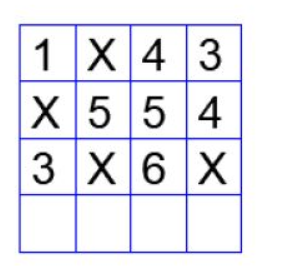In the $4 \times 4$ array shown below, each cell of the first three rows has either a cross $(X)$ or a number.

The number in a cell represents the count of the immediate neighboring cells (left, right, top, bottom, diagonals) NOT having a cross ( $X$ ). Given that the last row has no crosses $(X)$, the sum of the four numbers to be filled in the last row is
- $11$
- $10$
- $12$
- $9$